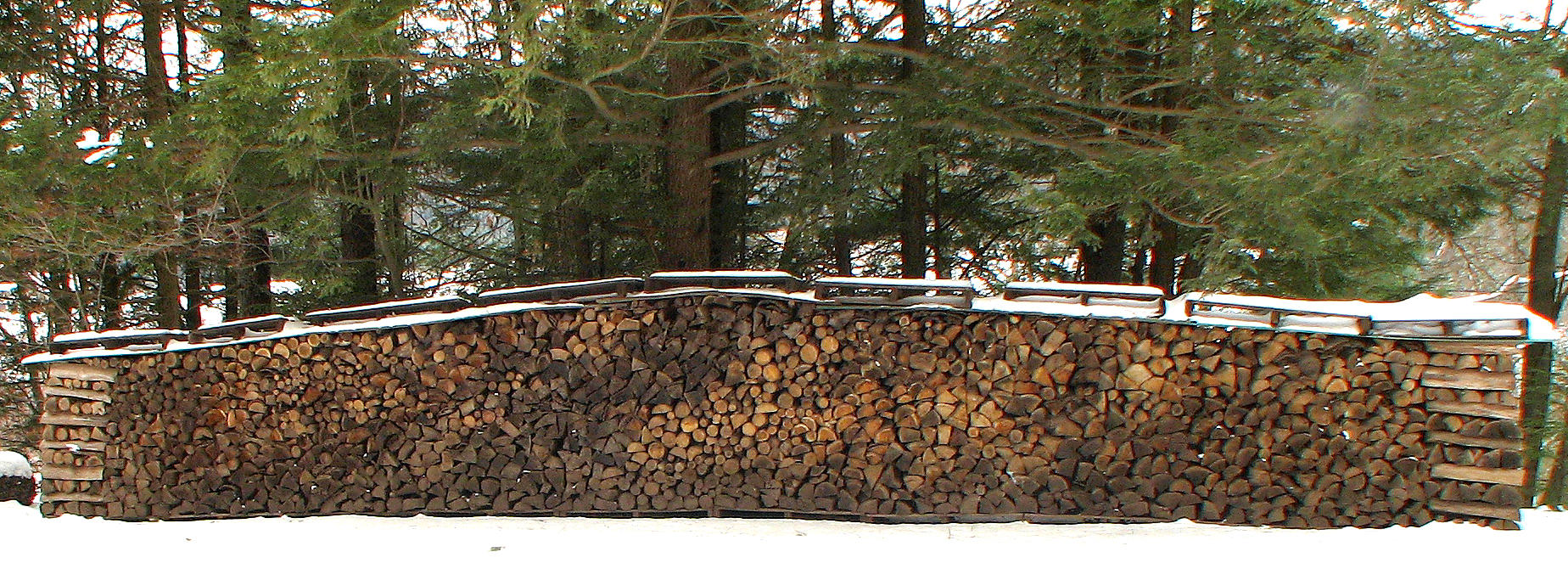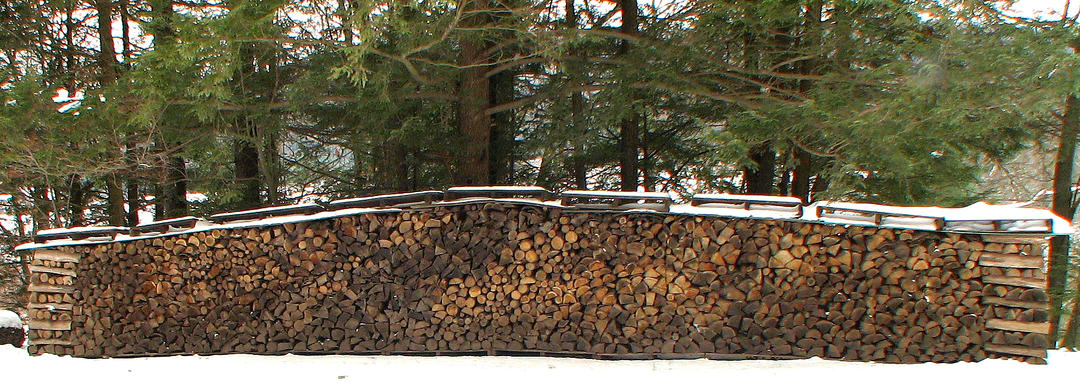I have been splitting, stacking and hauling firewood since I was a kid, though I now cheat a bit and order from a couple of local brothers who deliver the wood already split. The stacking and hauling still keeps me busy enough and, as they say, the wood warms me twice. I enjoy the daily ritual of starting a fire on a cold morning, and the warm glow of our stove provides a nice gathering spot for my family in the evening during the winter months. That warmth is all the more pleasant, knowing that I am contributing to our local forest economy, and replacing the use of my other source of heat, an oil-burning furnace.
Since joining Audubon Vermont a little over a year ago, I have also learned that those of us burning wood to heat our homes can do so in a manner that not only displaces fossil fuels but also helps birds. While cutting down trees to help birds may not seem like an obvious recommendation from an environmental organization, harvesting those trees in a careful and sustainable manner, and burning the wood from those trees in advanced wood heating stoves and furnaces can be good for forests, birds and the environment.
Vermont’s forests provide many benefits in addition to providing habitat for birds and other wildlife. Our forests provide clean water, clean air, flood resilience, and also capture and store carbon. In order to realize these benefits, we need to keep our forests as forests. In Vermont, a large majority of our forest land is privately owned. For that reason, we need to find ways to help forest landowners get an economic return from their land. Buying wood for use to heat our homes, whether in woodstoves or wood pellet boilers, is one way to help provide that financial benefit for those landowners who need the income and who prioritize careful long-term and sustainable management over short-term profit.
Buying wood harvested from those forests can benefit birds. Audubon Vermont works with Vermont’s foresters and forest landowners, in collaboration with the Vermont Department of Forests, Parks and Recreation and partners like the Vermont Woodlands Association to promote bird-friendly forest practices. These practices not only allow, but depend upon the harvesting of trees to ensure a mix of tree species and age classes.
Old-growth forests also have this same mix of different trees, both in size and species, due to natural disturbances and the life cycle of trees. Vermont’s existing forests are, however, relatively young and even aged, having been largely cleared a century ago. By harvesting trees selectively from our forests, we can mimic the features of older forests and, in so doing, benefit birds. Importantly, by harvesting wood from our forests in this bird-friendly manner, landowners can also benefit financially and, for that reason, are more likely to keep their land undeveloped and forested.
Much of the recent conversation in the Vermont news about wood energy has discussed the interesting and important questions about whether the use of wood (referred to as biomass) for energy is good for the climate. The climate crisis is a critical challenge for all of us and especially for birds, as captured in Audubon’s recent report: Survival By Degrees. While the climate implications of burning wood for energy are complex, I will note two significant and relevant variables:
(1) First, there is a big difference between burning wood for heat, and burning wood to generate electricity. The efficiency of advanced wood heating systems now available to heat our homes and businesses far exceeds the efficiency of burning wood for electricity. Burning wood for electricity has been described as throwing away three trees to get a single tree’s worth of electricity. As Bill McKibben has written, there are real questions about the climate impacts of burning pellets produced from short-rotation pine plantation forests to fuel power plants in Europe; and
(2) Second, the source of the wood matters. Treating trees like an agricultural crop, like happens in some pine plantations where only one species of tree is planted and the trees are harvested after only short duration rotations, provides little useful habitat, is at risk to pests and disease, and provides limited levels of carbon storage over the long-term. Harvesting trees from a local Vermont woodlot, where the forest has been stewarded in a manner that benefits birds, promoting a healthy and resilient mix of species and age classes of trees, is a different story entirely.
In the argument over whether to harvest trees in the context of climate change, some resort to reciting the apparent truism that leaving trees standing and growing is the best way to maximize the amount of carbon sequestered from the atmosphere and stored in our forests. While that may be correct, some research suggests that selective thinning can improve tree growth and increase carbon uptake. Regardless, this assertion side-steps an important question: how do we keep our forests as forests in the first place? No less an organization than the International Panel on Climate Change (IPCC) has concluded that “In the long term, a sustainable forest management strategy aimed at maintaining or increasing forest carbon stocks, while producing an annual sustained yield of timber, fiber, or energy from the forest, will generate the largest sustained mitigation benefit.”
If we lose our forests to development, the question of how much carbon they store is irrelevant. You may or may not have an interest in joining me in my daily winter chore of stoking up the woodstove, but we all benefit when our forests are managed for birds, including harvesting some trees that we split, stack and haul in order to heat our homes.
Thank you to Seven Days and the St. Albans Messenger for publishing Audubon's op-ed.






